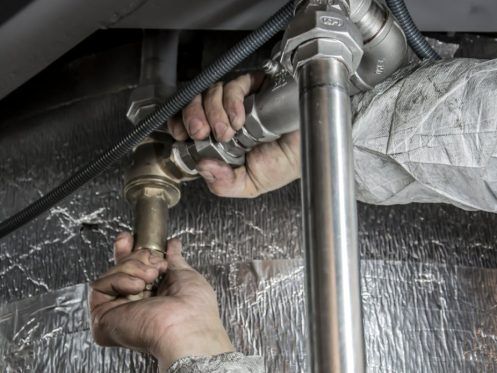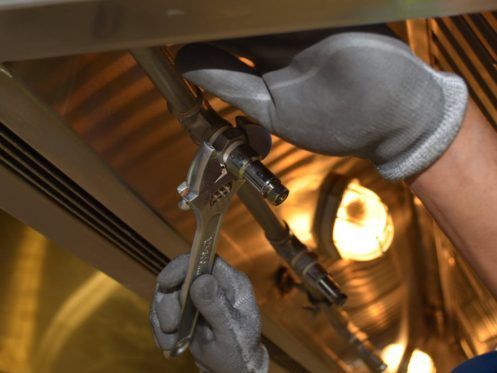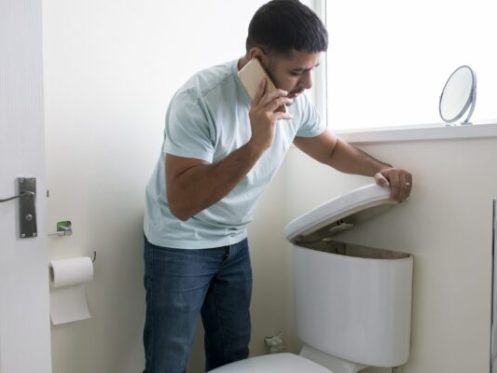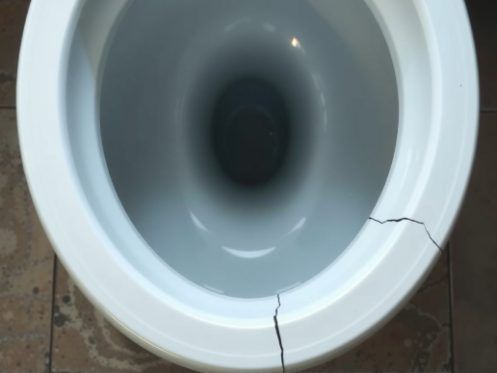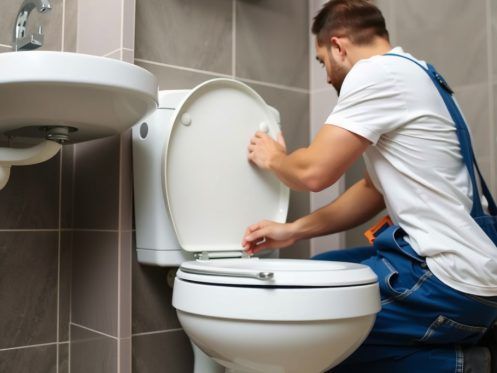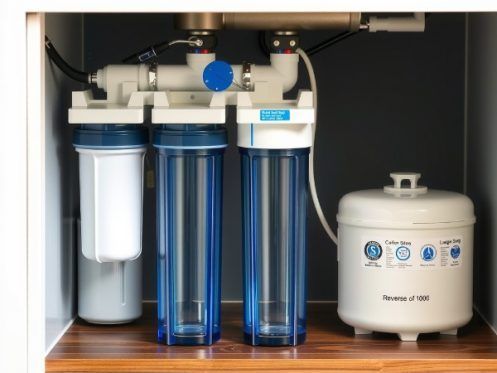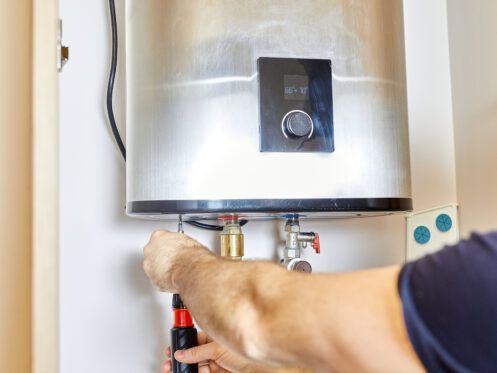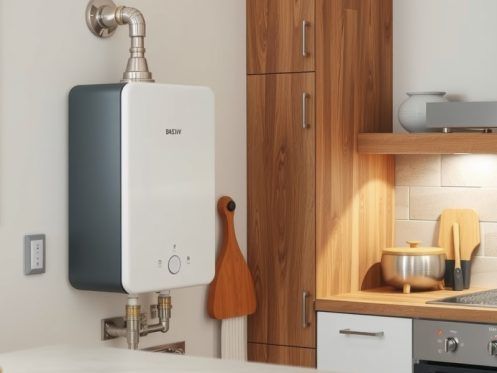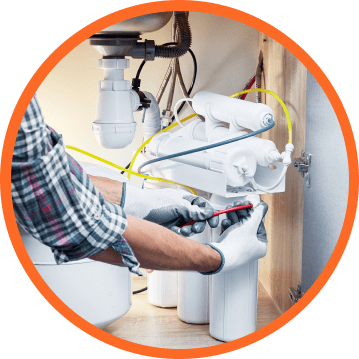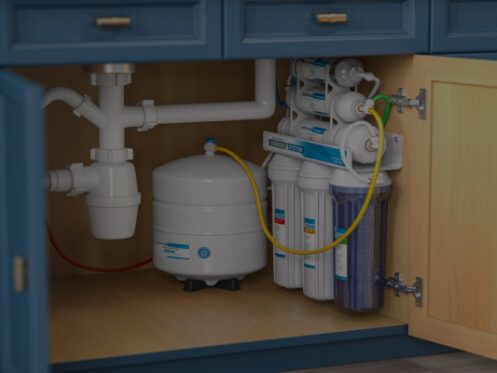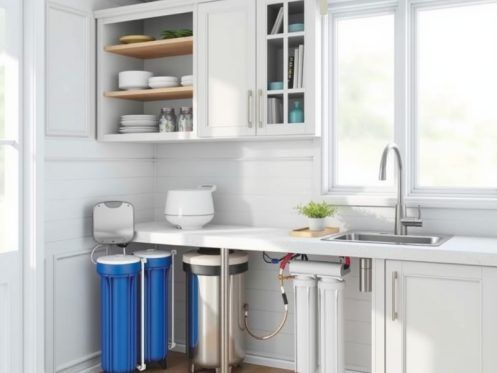
If you rely on well water for your Utah home, you’ve probably thought about the best way to keep it clean and safe. One of the most popular water filtration options is reverse osmosis for well water—but is it the right choice for you? Let’s break it down so you can make an informed decision.
Understanding Reverse Osmosis: How It Works
Reverse osmosis (RO) is a high-tech way to filter water, removing a wide range of contaminants using a reverse osmosis membrane. It works by pushing water through a semi-permeable membrane that traps unwanted particles, including chemicals, bacteria, and other contaminants.
The result? Purified water that’s free from many of the impurities that could be lurking in your well. However, it’s important to understand that osmosis systems also produce water waste as part of the filtration process. Some systems include a permeate pump to help reduce water waste, making them more efficient.
Common Well Water Contaminants in Utah and RO Filtration Efficiency
Unlike municipal water systems, well water in Utah isn’t treated before it reaches your home, meaning it can contain a variety of contaminants depending on location, geology, and environmental factors. Utah’s well water is often affected by:
- Sediment and silt – Many areas in Utah, particularly near the Wasatch Front and southern parts of the state, have naturally high levels of sediment in well water. These particles can clog pipes, reduce water pressure, and damage appliances.
- Hard water minerals (Calcium and Magnesium) – Utah is known for its hard water. While these minerals aren’t necessarily harmful to health, they cause scale buildup in plumbing and appliances, reducing efficiency and lifespan.
- Iron and manganese – Common in rural areas of Utah, these minerals can stain sinks, tubs, and laundry, and create a metallic taste in water.
- Arsenic – Some regions of Utah, particularly in areas with geothermal activity, may have naturally occurring arsenic, which can be harmful if consumed in high amounts.
- Nitrates – Found in agricultural areas where fertilizers and livestock waste seep into groundwater, high nitrate levels can pose health risks, particularly for infants and pregnant women.
- Radon and uranium – Believe it or not, parts of Utah have elevated levels of naturally occurring radioactive elements in groundwater, such as uranium, which may pose long-term health risks.
- Bacteria and viruses – Shallow wells or wells near livestock farms or septic systems can be contaminated with harmful microorganisms that cause illness.
- Sulfur (hydrogen sulfide gas) – Causes a rotten egg odor in water, a common issue in some Utah wells.
Reverse osmosis water is highly effective at filtering out many of these contaminants, making it one of the best filtration methods available. However, RO systems alone may not be sufficient for certain well water problems. For instance, bacteria and viruses require additional treatment, such as a UV filter, while hard water minerals may necessitate a water softener before the RO system is installed.
If you live in Utah and rely on well water, getting a professional water test can help determine the exact contaminants in your water supply, ensuring you choose the best filtration system for your needs.
Pros and Cons of Using Reverse Osmosis for Well Water
Like any water filtration system, reverse osmosis systems have both advantages and disadvantages. Let’s look at both sides.
The Benefits of Reverse Osmosis
- Highly effective filtration – Removes a vast array of contaminants, improving water quality.
- Better taste and odor – Say goodbye to funny-smelling, bad-tasting well water.
- Healthier drinking water – Filters out heavy metals, lead, and harmful chemicals.
- Customizable system options – You can pair your RO system with a UV filter, pump, or other pre-treatment solutions.
The Downsides of Reverse Osmosis
- Water waste – Traditional osmosis systems produce water waste, though some modern permeate pumps help improve efficiency.
- Removes minerals – It filters out beneficial minerals along with contaminants, which can affect the pH of your water.
- Requires maintenance – Filters and RO membranes need to be replaced regularly.
- Water pressure considerations – Low water pressure can affect how well an RO system functions.
- May require electricity – Some systems need electricity to operate properly, adding to your home’s energy use.
Pre-Treatment Requirements for Well Water Before RO
Before you install an RO system, you may need some extra filters or treatments to prepare your well water supply. Well water often contains sediment, iron, and bacteria that can damage an RO membrane or clog the system.
Here’s what to consider:
- Sediment filters – These remove sand, dirt, and debris before they reach your reverse osmosis membrane.
- Water softeners – If your water is high in iron or hardness minerals, a softener can prevent buildup in the system.
- UV Filters – A UV filter kills bacteria and viruses, making your water safer.
- Carbon Filters – These help remove odors and certain chemicals that RO alone might not catch.
Maintenance and Cost Considerations of an RO System
If you decide to get a reverse osmosis system, you’ll need to keep up with regular maintenance to keep it running smoothly.
Routine Maintenance Tasks
- Replace RO membranes and filters – The RO membrane typically lasts 2-3 years, while pre-filters should be changed every 6-12 months.
- Clean and sanitize the system – Prevents bacterial growth and maintains water quality.
- Check the tank and pump – Make sure your tank is holding enough purified water and that your pump is functioning properly.
Cost Factors
The upfront cost of an RO system varies, depending on size and features. Expect to pay anywhere from a few hundred to several thousand dollars for a whole-house system. You’ll also need to budget for replacement filters and membranes, plus any necessary pre-treatment options.
Alternative Filtration Systems for Well Water
If reverse osmosis doesn’t seem like the right fit for you, there are other water filtration options to consider:
- Carbon filters – Good for improving taste and removing chlorine and some chemicals.
- Water softeners – Best for reducing hardness and iron levels.
- UV filters – Ideal for killing bacteria and viruses.
- Whole-house filtration systems – Can be customized to target specific contaminants.
Is Reverse Osmosis Right for Your Well Water?
Ultimately, the best water filtration system for your well depends on what’s in your water supply. Reverse osmosis for well water is a great choice if you want purified water that’s free from lead, iron, bacteria, and other contaminants. However, if your water contains high levels of sediment, low pH, or bacteria, you may need additional treatment options.
If you’re unsure, Rare Breed Plumbing can help! We specialize in water systems and reverse osmosis installations in Bountiful, UT, and the surrounding areas. Contact us today to test your well water and find the best filtration solution for your home!

